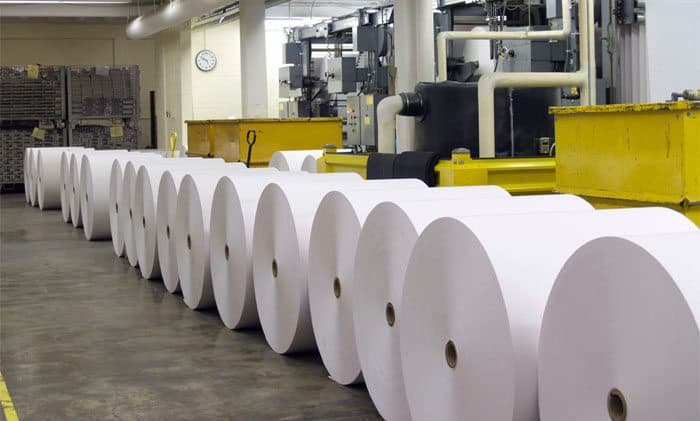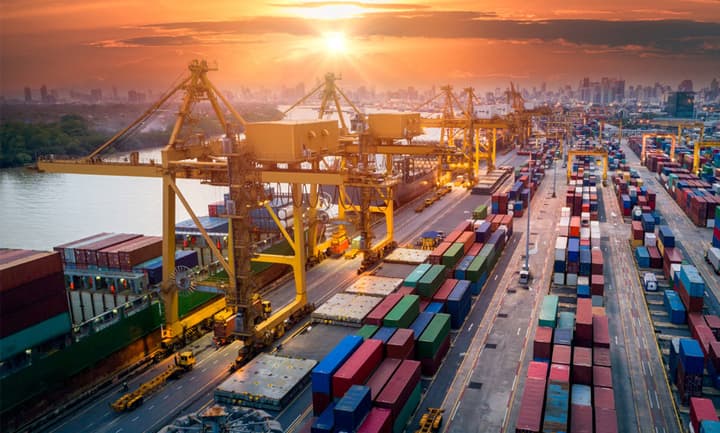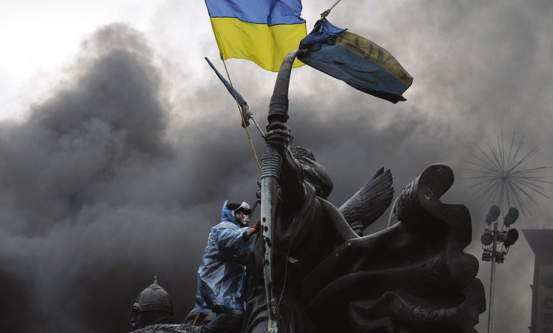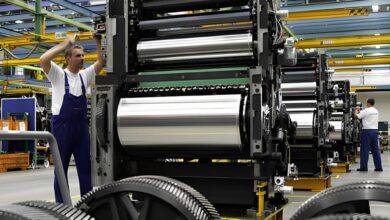
The sky rocketing paper prices, raw material shortages, supply chain disruptions, Covid 19, Ukraine crisis and soaring energy prices set off a perfect storm for printing industry.
There is no doubt that printing is a resilient industry. For every disruptive and new technology that has been introduced to the market there are a number of naïve pundits who foresee the death of printing. But the buoyant ink and paper industry proved them wrong every time. However, during past two years a combination of rare events have posed serious challenges to the graphic arts industry.
Skyrocketing paper prices
The graphic industry experiences a paper supply shortage it has never experienced before. The current paper shortages will have severe repercussions in the supply of print products for all economic markets. This constitutes a threat not only to the graphic industry but endangers its support function for all sectors and the much- needed rebound of the European economy. According to Intergraf for over 6 months, the sector is experiencing an unprecedent crisis. Paper prices have been registered a growth rate of 45% on average in the last 6 months, even up to 80% for newsprint paper used to produce newspapers.
The recent and still ongoing strike in Nordic paper mills – now set to last until the end of March or even April- aggravates the situation for the supply of paper and board in Europe in the very short term. The stocks of printing companies will not last until the strike has been settled.

On the other hand, several members of the World Print & Communication Forum (WPCF) warn that the current paper shortages will have severe repercussions in the supply of print products for all economic markets and endangers the rebound of the graphic industry after the pandemic. While during the past two years graphic products have clearly witnessed a decline, demand is now almost back to pre-pandemic levels in most countries. In 2020 customers were forced to reduce print advertising and many switched to electronic means for their communication. In mid-2021, this market has come back to print, but customers are now facing surging prices and uncertainty about the supply of paper and board. In some countries including Turkey and Sri Lanka the shortage of paper is very alarming . Sri Lank government were forced to cancel school exams due to acute shortage of paper, while in Turkey where annual inflation rate reaching an all-time high of 55%, representatives of the paper industry stated that packaging prices have increased by more than 100% compared to the previous year. Additionally, it is reported that the increasing costs are also having a bearing on the recycling sector.
Supply chain disruptions
One of the many ways the Covid-19 pandemic has affected small businesses includes delays in obtaining needed inventory from supply chain disruptions.
The last two years have been trying for businesses and families alike. As the pandemic first swept through, no one could have anticipated that we would still be dealing with its ramifications today. It spawned a host of new challenges from how we interact with one another, our means of communication and how we obtain supplies.

Every component within the printing industry has been affected by the pandemic and subsequent economic shutdown. Supply chain operators are having issues sourcing pulp, binding, adhesive glues and other materials. There is not a single cause to be blamed, but rather many that accumulated into a perfect storm for the printing industry.
The persistent issues that are exasperating global supply chain are freight, overseas shipments and blockages at ports across the globe.
According to LPC, a marketing communications and industry research company, in 2020, moving a container from Asia to ports on the eastern US seaboard typically would have cost 1,000-2,000 USD. Today, moving that same container along the same route costs close to 20,000 USD.
Many of these disruptions are out of the hands of any individual company. This is a systemic issue that will more than likely continue in some way or another for years to come. However, there are ways to take some control of the situation, to make sure issues don’t compound and cause further problems.
Raw material shortages
Other than paper raw materials for production of printing inks coating and adhesives are also in short supply. Flint ink, one of the bigge3st producers of inks and coatings in a recent press release offers a glimpse into the problems of rising consumable prices. According to Flint Group The paradigm shifting impact of the global pandemic upon the printing consumables market continues unabated with further shortages of core raw materials, human resources and logistical services, creating previously unforeseen instability within the printing consumables global supply chain.

Tony Lord President of Flint Group’s CPW (Commercial Publication Web) and OPS (Offset Packaging Solutions) divisions said “this once in a generational event has created a structural scarcity of core raw materials as upstream precursor and primary raw material providers within the supply chain are directing their reduced capacity’s to more lucrative industries than the printing consumables markets. This creates a binary impact of not only shortages of raw materials but an exponential increase in pricing for those raw materials we can obtain.”
Lord concluded, “We were hopeful the market instability seen during 2021 would have moderated but regrettably we see no possibility of a cessation in prevailing conditions for 2022”.
On the other hand, shortages of electronic chips as well as metals such as iron, aluminum and others forced press manufacturers to increase their prices even further.
Sun Chemical also increase prices across selected parts of its pigments, dyes and preparations portfolio, since 2022. The price increase affected all market segments.
Sun Chemical said continuous inflationary pressure and further price spikes for key raw materials continue to drive cost increases. Additionally, the strong impact of the global transportation crisis and inflation on the different components of the manufacturing process are worsening the situation.
hubergroup, another major ink manufacturer also increased it prices across all its product categories. The company stated that as the costs of raw materials, transport, labor, and energy continue to rise, hubergroup Print Solutions now reacts with a price increase for all global regions.
Ukraine Crisis
According to WPCF Tensions on all markets are increasing with the war in the Ukraine and will cause additional supply problems to produce forest-based products that source their wood or pulp from Russia or the Ukraine. However, crisis in Ukraine brought paper and packaging together. In the wake of Russia’s military operation in neighboring Ukraine, many of the world’s leading paper, printing, and packaging companies have been deeply impacted by a sudden refusal to deal with Russian firms.
On the whole, the military incursion is severing key supply chains – already in disarray from the outstretched impact of the COVID-19 pandemic – and setting global companies on a scramble to comply with an ever-growing set of sanctions.

Russia’s invasion of Ukraine has also severely impacted the packaging industry throughout Europe, given the status of Russia and Ukraine as key suppliers of timber as raw material. With exports alone worth over 12 billion euros, the paper and packaging industry will be drastically affected by the crisis.
The war has created instability and unpredictability in trade and business relations between EU and the warring nations, Russia and Ukraine, and to some extent Belarus, with its economic impact still very difficult to assess in the foreseeable future.
The exclusion of Russian banks from SWIFT and the dramatic plunge in the ruble’s exchange rates will lead to far-reaching restrictions on trade between EU and Russia.
As paper and pulp trade flows between EU and Russia are quite large, bilateral trade restrictions could impact EU paper and pulp industry significantly. While most countries in Europe are impacted by the ongoing crisis, those that are severely affected along with their industries include Germany and Sweden, which account for 55% of the EU pulp exports to Ukraine, and Finland representing 54% of all EU exports of paper and board to Russia. Ukraine is a major importer of paper and board from the EU with limited exports, while EU-Russia trade is quite balanced. Restrictions on the trade of wood and wood-based products which could be included in the sanctions by either EU or Russia could substantially harm the paper industry.
Meanwhile major digital printing equipment vendors including HP. Xerox and a number of software suppliers such as Microsoft stopped shipment to Russia. Others such as Canon and Fujifilm announced donations to Ukraine for supporting humanitarian aids and efforts.
What is next for global printing industry?
Things may appear bleak at the moment, but the demand for printed products is healthy and increasing. Printers and converters have no way adapt to the so called new normal and plan ahead, especially when it comes to inventory and supplies. Communication with customers is key to success in these difficult times.
Letting customers know ahead of time that there could be delays in their orders can help prepare them for a potentially unideal turnaround time. Loyal customers are likely to appreciate and remember this sincerity when making another purchase decision.
Riding the storm
In order to navigate the current perfect storm printers should be ready to make tough decisions and never lose communication with their customers. The blatant honesty is key to survive in current strange situation. Good luck!

.gif)




One Comment